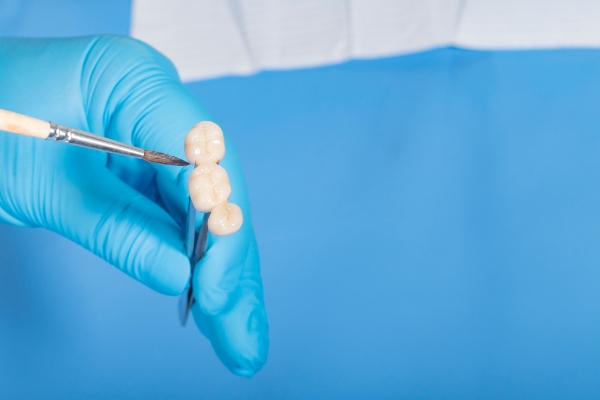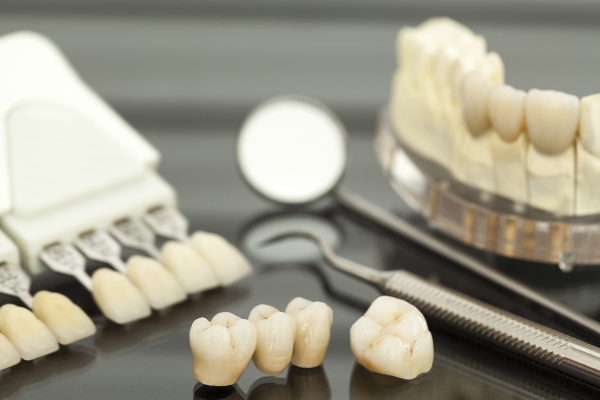 While it might not seem that common, receiving a partial denture for one missing tooth is a solution that is well-known among dental professionals. According to the American Dental Association, the average person between 20 and 64 years of age has three or more missing teeth. This can happen for reasons such as serious decay, an accident, or a pulled tooth.
While it might not seem that common, receiving a partial denture for one missing tooth is a solution that is well-known among dental professionals. According to the American Dental Association, the average person between 20 and 64 years of age has three or more missing teeth. This can happen for reasons such as serious decay, an accident, or a pulled tooth.
Just one missing tooth can result in significant consequences for the overall health of a person's mouth. The exact consequences depend in part on the location of the missing tooth. For example, a missing molar is likely to impact chewing. An absent tooth that is closer to the front of the mouth will produce a visible gap and could also affect how a person speaks. Perhaps most seriously, a missing tooth can cause remaining teeth to shift as well as cause bone loss around the absent tooth.
A dentist can recommend the appropriate option for dealing with missing teeth. A partial denture is a right approach for many people.
The options for a partial denture
Not every partial denture for one missing tooth is the same. The dentist has a choice of several common removable denture designs. The first is a replacement tooth attached to gum-colored plastic bases. A second choice involves a metal framework that clasps to nearby teeth. A third choice utilizes precision attachments that are useful in specific situations:
- The necessity of a crown to help with fit.
- The desire for a more pleasing appearance.
- The ability of the patient to accept a higher cost.
The dentist will design the right partial denture for each person. Even with a smaller denture, an adjustment period is to be expected. Most people take about 30 days to feel comfortable wearing the partial denture.
Eating meals and snacks is often challenging the first few days. Individuals should start small and slow and try soft foods. Chewing on both sides of the mouth can help a person adjust. Also, avoiding chewy and sticky foods at first is recommended.
The process of getting comfortable
In addition to coping with eating, new wearers of a partial denture might experience a sense of discomfort. In many situations, this will gradually improve over a short period of time. With a partial denture, the removal and inserting process will take some practice. The partial denture should never be forced into place as this could break the prosthesis.
At first, the dentist may recommend the person wear the partial denture most of the time. This can help shorten the adjustment period, as well as identify any areas that cause soreness. The dentist could have to make alterations to the denture to keep it from causing soreness in the soft tissue of the mouth. Soon, the denture should be taken out of the mouth at night and reinserted in the morning.
Conclusion
Due to the frequency of missing teeth in people of all ages, a partial denture for one missing tooth is a common solution. It helps people replace a missing tooth through a proven process.
Request an appointment or call Grand Valley Dentistry at 616-259-6046 for an appointment in our Allendale Charter Twp office.
Recent Posts
A lost tooth can be a challenging situation to deal with in your life. Fortunately, a partial denture for one missing tooth is an excellent option to get your smile back to full capacity. Your dentist can go over your choices for this procedure and can even set you up with a removable denture. Opting…
According to the American Dental Association, over 120 million people in the U.S. are missing at least one tooth. To rectify this, a partial denture for one missing tooth may be a solution. If you are considering getting a partial denture or already have one, it is important to understand the proper way to care…
Patients in need of a partial denture for one missing tooth have many options to choose from in terms of materials. There are three primary materials used to fabricate partial dentures, and patients need to choose the right one based on their own needs and dentist recommendations.When determining what type of denture material to choose,…


